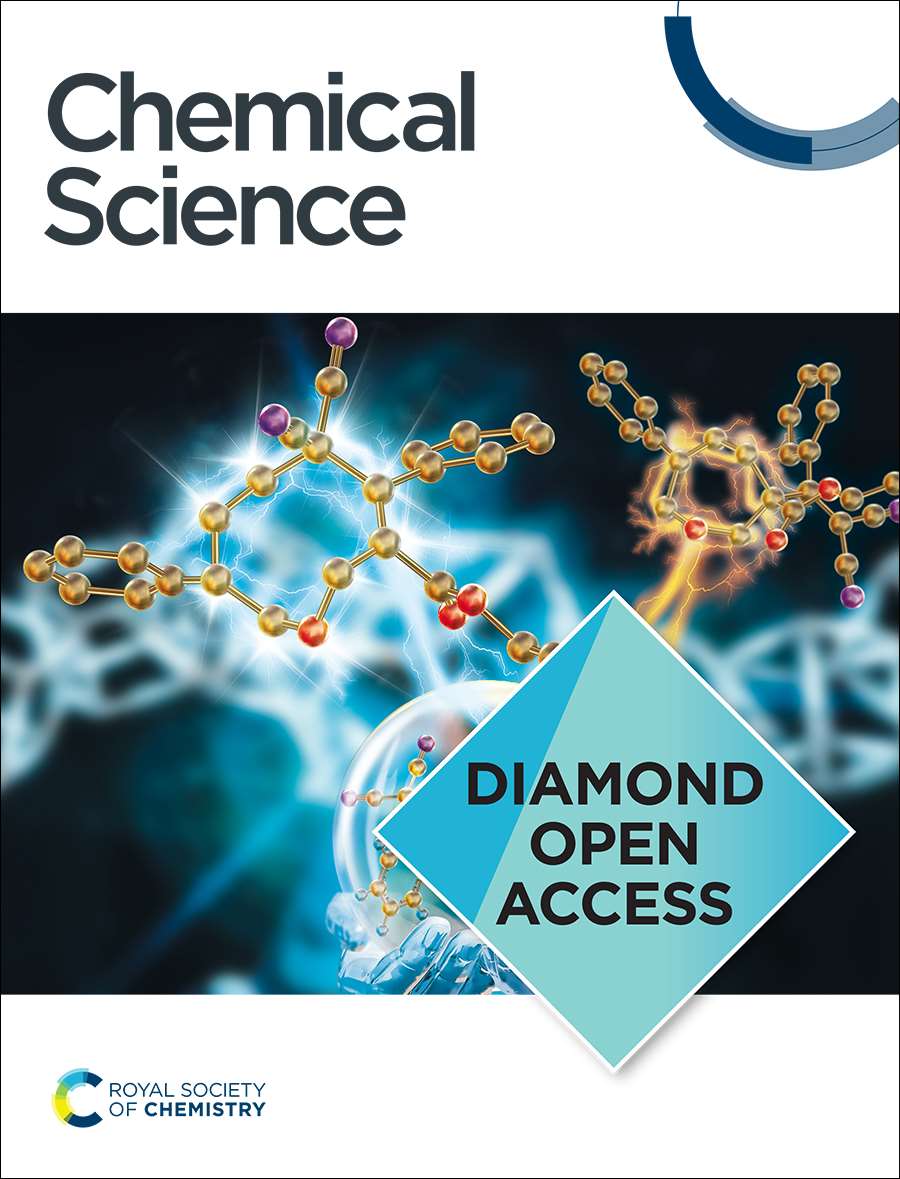Deciphering Potential-Driven Dynamics in Fe-N-C Catalysts: Ab Initio Insights into Fe−N Switching and Spin-State Transition
IF 7.6
1区 化学
Q1 CHEMISTRY, MULTIDISCIPLINARY
引用次数: 0
Abstract
Pyrolyzed Fe-N-C materials are cost-effective alternatives to Pt for the acidic oxygen reduction reactions (ORR), yet the atomic and electronic structures of their active centers remain poorly understood. Operando spectroscopic studies have identified potential-induced reversible Fe-N switching in the FeNx active centers of D1 type, which provides a unique opportunity to decode their atomic structures, but the mechanism driving this behavior has been elusive. Herein, using constant-potential ab initio molecular dynamics (CP-AIMD), we reveal that pyridinic FeN₄ sites transit reversibly between planar OH*-Fe³⁺N4 and out-of-plane H₂O*-Fe²⁺N₄ configurations at 0.8 V, mirroring experimental Fe-N switching phenomenon. This shift arises from a spin-state transition: intermediate-spin Fe³⁺ (S = 3/2) converts to high-spin Fe²⁺ (S = 2) as potential decreases, driven by the pseudo Jahn-Teller effect and strong H₂O binding on high-spin Fe2+ center. Additionally, a metastable 2H2O*–Fe2.5+N4 configuration exists, acting as a transitional state during the reversible switching process. Calculated X-ray absorption and Mössbauer spectra based on CP-AIMD align closely with experimental data, bridging the theoretical predictions and experimental observations. Crucially, this dynamic Fe-N switching is unique to pyridinic FeN₄ sites, challenging the long-held assumption that D1 sites are pyrrolic FeN₄. This study clarifies the potential-driven dynamics and active center structures in Fe-N-C catalysts and well help to precisely design Fe-based ORR catalysts.解析Fe-N- c催化剂的电位驱动动力学:从头算Fe-N开关和自旋态跃迁
在酸性氧还原反应(ORR)中,Fe-N-C热解材料是Pt的低成本替代品,但其活性中心的原子和电子结构仍然知之甚少。Operando光谱研究已经在D1型的FeNx活性中心发现了电位诱导的可逆Fe-N开关,这为解码其原子结构提供了独特的机会,但驱动这种行为的机制一直难以捉摸。本文采用恒电位从头算分子动力学(CP-AIMD)方法,揭示了吡啶型FeN₄位点在0.8 V下在平面OH*-Fe³+ N4和面外H₂O*-Fe²+ N₄构型之间可逆迁移,反映了实验中Fe-N切换现象。这种转变是由自旋态转变引起的:在伪Jahn-Teller效应和高自旋Fe2+中心强h2o结合的驱动下,中自旋Fe + (S = 3/2)随着电位的降低转化为高自旋Fe + (S = 2)。此外,存在一个亚稳的2H2O* -Fe2.5 +N4构型,在可逆开关过程中充当过渡态。基于CP-AIMD计算的x射线吸收光谱和Mössbauer光谱与实验数据密切吻合,将理论预测与实验观测联系起来。至关重要的是,这种动态Fe-N切换是吡啶型FeN₄位点所特有的,挑战了长期以来D1位点是吡啶型FeN₄的假设。本研究阐明了Fe-N-C催化剂的电位驱动动力学和活性中心结构,有助于铁基ORR催化剂的精确设计。
本文章由计算机程序翻译,如有差异,请以英文原文为准。
求助全文
约1分钟内获得全文
求助全文
来源期刊

Chemical Science
CHEMISTRY, MULTIDISCIPLINARY-
CiteScore
14.40
自引率
4.80%
发文量
1352
审稿时长
2.1 months
期刊介绍:
Chemical Science is a journal that encompasses various disciplines within the chemical sciences. Its scope includes publishing ground-breaking research with significant implications for its respective field, as well as appealing to a wider audience in related areas. To be considered for publication, articles must showcase innovative and original advances in their field of study and be presented in a manner that is understandable to scientists from diverse backgrounds. However, the journal generally does not publish highly specialized research.
 求助内容:
求助内容: 应助结果提醒方式:
应助结果提醒方式:


